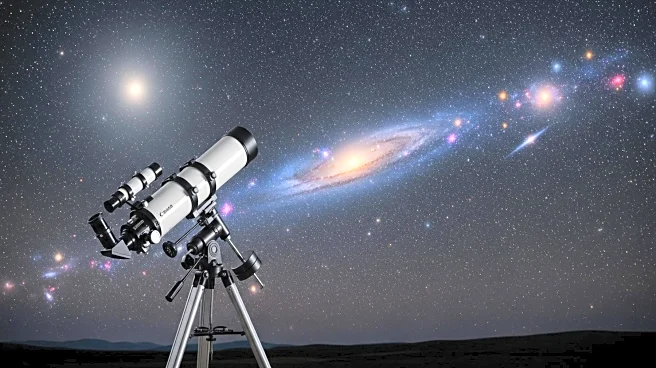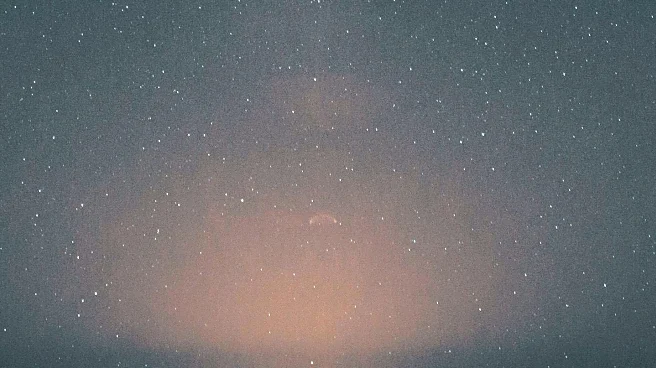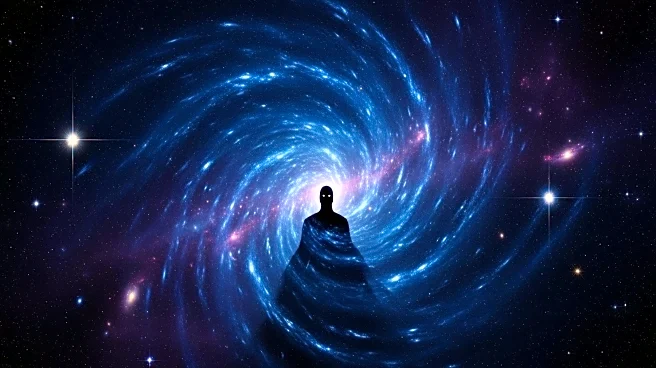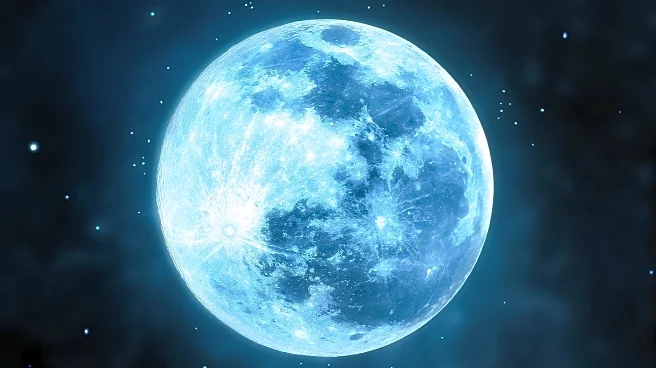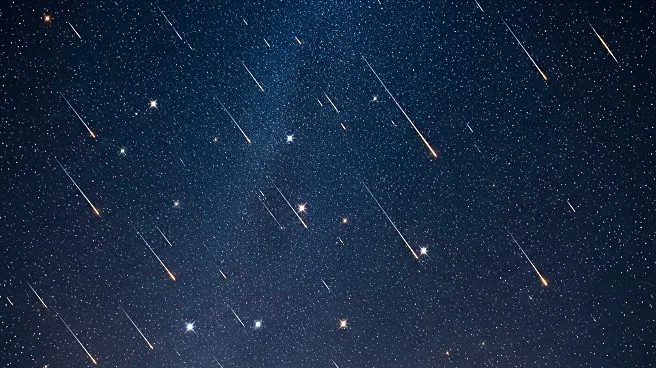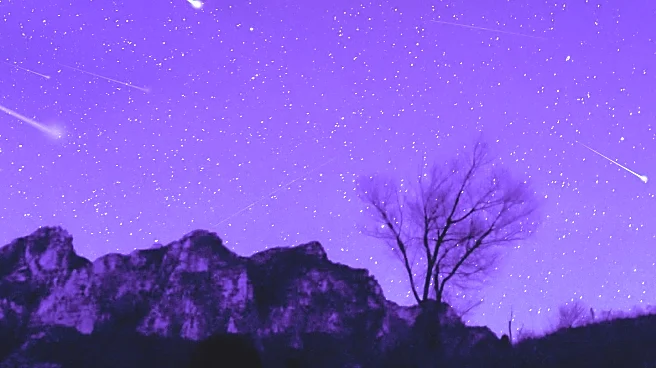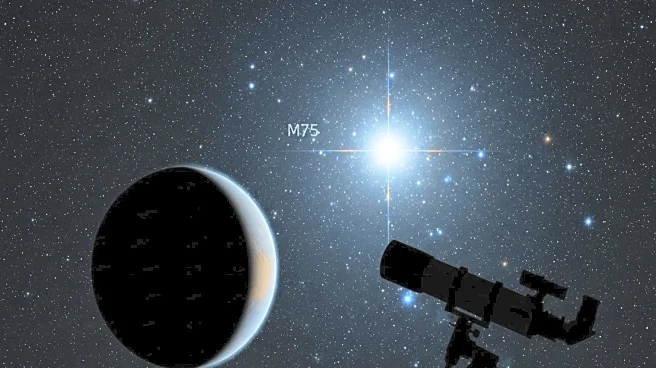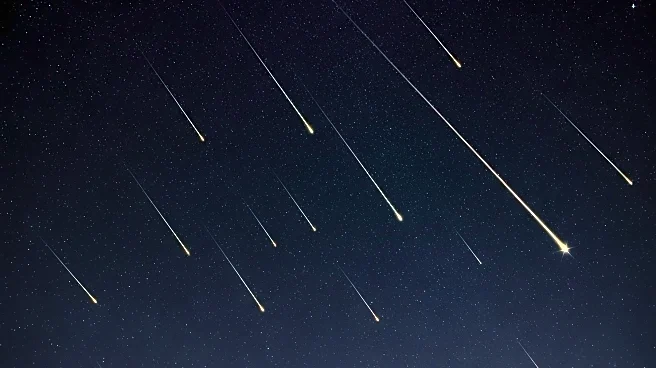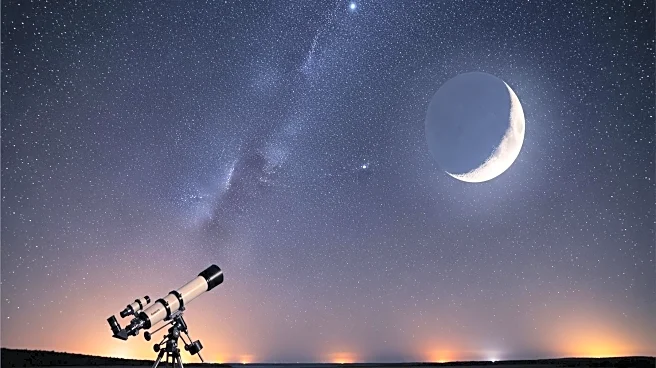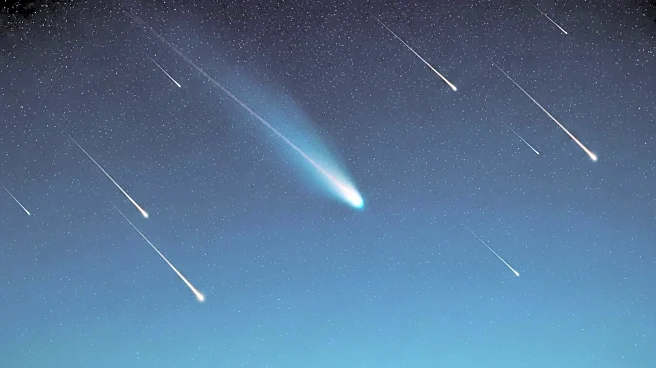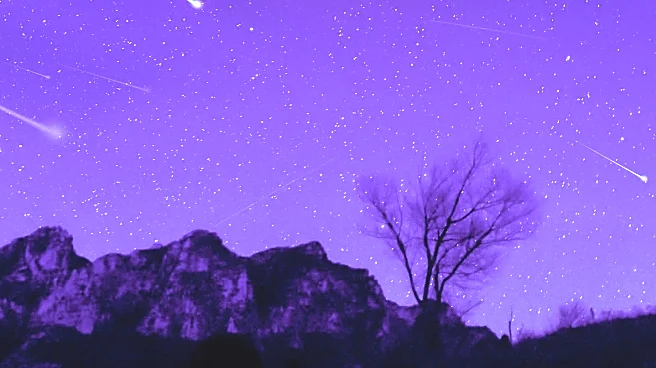What is the story about?
What's Happening?
As autumn unfolds in the northern hemisphere, astronomers are gearing up for a season filled with remarkable celestial events. The longer nights provide an ideal backdrop for stargazing, with several astronomical targets set to captivate observers. Key highlights include the constellation Orion, which rises in the east around midnight, and the Orionid meteor shower, peaking on October 20-21 with up to 20 meteors per hour. The Andromeda Galaxy, visible overhead during October nights, offers a chance to observe the Milky Way's closest neighbor. Additionally, Comet C/2025 A6 (Lemmon) is brightening as it approaches the sun, potentially becoming visible to the naked eye. Saturn, having recently reached opposition, presents a bright target in the evening sky, with its rings visible through telescopes.
Why It's Important?
These celestial events provide significant opportunities for both amateur and professional astronomers to engage with the night sky. Observing such phenomena can enhance public interest in astronomy and science, fostering educational opportunities and community engagement. The visibility of Comet Lemmon and the Orionid meteor shower can inspire awe and curiosity, potentially leading to increased investment in astronomical research and technology. Furthermore, these events offer a chance for scientific study, such as tracking cometary behavior and understanding meteor shower dynamics, contributing to broader knowledge in astrophysics.
What's Next?
As the season progresses, astronomers and enthusiasts will continue to monitor the brightening of Comet Lemmon, with hopes of it becoming a prominent feature in the night sky. The peak of the Orionid meteor shower will attract observers aiming to capture the event through photography and telescopic observation. Saturn's visibility will persist, encouraging further exploration of its rings and cloud bands. These events may lead to organized stargazing events and educational programs, promoting community involvement and scientific literacy.
Beyond the Headlines
The autumn skywatching season underscores the cultural and scientific importance of astronomy. It highlights the human fascination with the cosmos and the ongoing quest to understand our universe. These events can inspire future generations to pursue careers in science and technology, emphasizing the role of astronomy in advancing knowledge and innovation. Additionally, they offer a moment of reflection on our place in the universe, fostering a sense of wonder and appreciation for the natural world.
AI Generated Content
Do you find this article useful?
